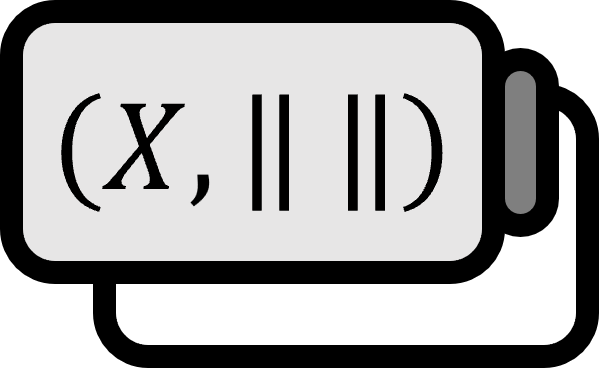Young Operator
Definition
For the normed spaces $X$ and $Y$, the operator $0_{\text{op}} : X \to Y$ below is called the zero operator.
$$ 0_{\text{op}} : x \to 0_{Y}, \quad \forall x \in X $$
$0_{Y}$ is the zero vector of $Y$.
Remark
In ordinary usage one does not distinguish the notation for the zero operator and the zero vector, but here, for clarity, we denote as follows.
- $0_{\text{op}}$: the zero operator
- $0_{Y}$: the zero vector of the vector space $Y$
- $0$: the scalar zero
The zero operator is an element of the set of bounded linear operators $B(X, Y)$ and, in particular, is the zero vector in the vector space $B(X, Y)$.
$$ B(X, Y) = \left\{ T : X \to Y \mid T \text{ is a bounded linear operator} \right\} $$
The adjoint operator of a zero operator is also a zero operator. For two zero operators $0_{YX} : X \to Y$ and $0_{XY} : Y \to X$,
$$ \braket{0_{YX}x , y}_{Y} = 0 = \braket{x, 0_{XY}y}_{X} $$
Theorem1
Let $X$ and $Y$ be inner product spaces, and let $Q : X \to Y$ be a bounded linear operator. Then the following hold.
A necessary and sufficient condition for $(a)$ to be $Q = 0_{\text{op}}$ is that for all $x \in X$ and $y \in Y$, $\braket{Qx, y} = 0$.
For the complex vector space $X$, if $Q : X \to X$ satisfies $\braket{Qx, x} = 0$ for every $x \in X$, then $Q = 0_{\text{op}}$ holds.
Proof
$(a)$
$(\implies)$ implies $\forall y \in Y$ and $\braket{0_{Y}, y} = 0$, so the result is immediate.
$(\impliedby)$ Assume that for all $x \in X$ and $y \in Y$ we have $\braket{Qx, y} = 0$. Then for some $x^{\prime} \in X$ the following holds.
$$ \braket{Qx^{\prime}, y} = 0, \quad \forall y \in Y $$
Then, by the properties of the zero vector, $Qx^{\prime} = 0_{Y}$.
$$ \forall \mathbf{x}\in X,\ \left\langle \mathbf{x},\mathbf{y} \right\rangle = 0 \implies \mathbf{y}=\mathbf{0} $$
Since $Qx^{\prime} = 0_{Y}$ holds for an arbitrary $x^{\prime}$, we obtain $Q = 0_{\text{op}}$.
■
$(b)$
By assumption, for all $v = \alpha x + y \in X$ we have $\braket{Qv, v} = 0$. Expanding this yields:
$$ \begin{align*} 0 &= \braket{Qv, v} \\ &= \braket{Q(\alpha x + y), \alpha x + y} \\ &= |\alpha|^{2}\braket{Qx, x} + \alpha\braket{Qx, y} + \overline{\alpha}\braket{Qy, x} + \braket{Qy, y} \end{align*} $$
By the assumption, the first and the last terms are $0$.
$$ \alpha\braket{Qx, y} + \overline{\alpha}\braket{Qy, x} = 0 $$
This must hold for an arbitrary $\alpha \in \mathbb{C}$, so writing $\alpha = 1$ and $\alpha = i$ gives the following equation.
$$ \braket{Qx, y} + \braket{Qy, x} = 0 $$
$$ \braket{Qx, y} - \braket{Qy, x} = 0 $$
$$ \implies \braket{Qx, y} = 0 \quad \forall x, y \in X $$
By $(a)$, we conclude $Q = 0_{\text{op}}$.
■
Erwin Kreyszig. Introductory Functional Analysis with Applications (1978), p197 ↩︎
